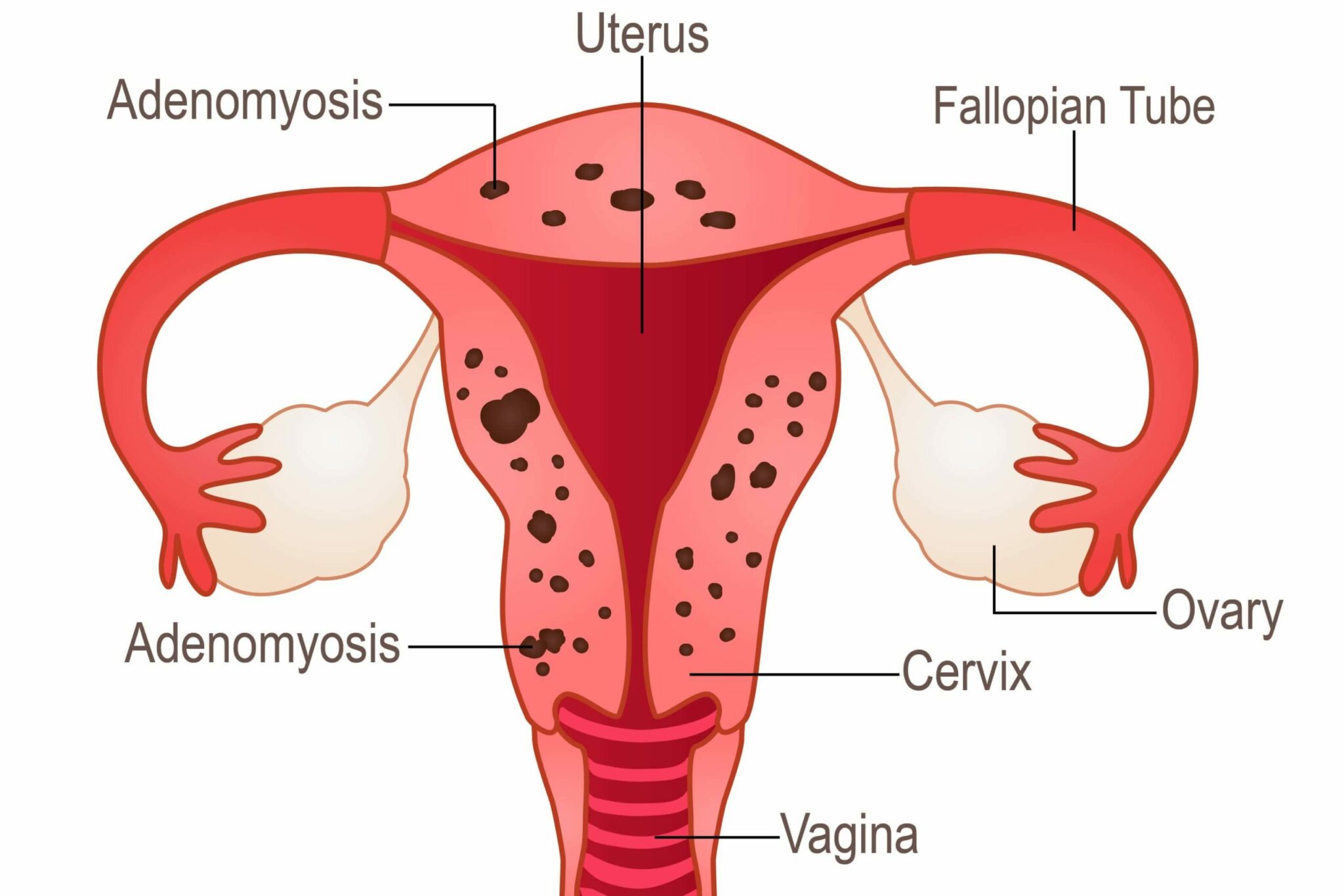What is Adenomyosis?

- Adenomyosis is a benign condition where endometrial tissue grows deep in the muscular walls of the uterus (myometrium).
- The myometrium is the middle layer of the uterine wall.
- This displaced tissue acts in the same way as normal endometrial tissue, thickening, breaking down and bleeding each month.
- The result of this is an enlarged uterus, which might be tender to the touch, and heavy, possibly painful, periods.
What causes adenomyosis?
The cause is not well understood. One theory postulates that uterine incisions during surgery (most often a Caesarean, or C–section) enable the invasive growth of endometrial cells lining the uterus into the myometrium. Another proposed mechanism is that inflammation of the uterine wall following childbirth causes damage to the normal boundary, allowing free movement of the endometrial cells.
In combination, these two theories explain why undergoing a C-section and giving birth are two of the risk factors implemented in the development of adenomyosis.
The continued growth of the endometrial cells also depends on levels of oestrogen being maintained. Women nearing the menopause appear to be at greater risk of developing the condition and it is suggested that this is because they have had cumulatively more oestrogen exposure than younger women.
How is adenomyosis diagnosed?
Diagnosis is challenging and used to be predominantly via a process of eliminating other possible conditions that can affect a female’s reproductive organs, including endometriosis, polyps, ovarian cysts and tumours. The only way to confirm a suspected diagnosis used to be by detailed examination of the uterus after removal by hysterectomy. Now, however, the use of high resolution transvaginal ultrasound (TVU) is gaining in popularity and proving to be a very useful diagnostic tool. In fact, using TVU has enabled doctors to diagnose adenomyosis in younger women with minimal symptoms. In turn this has demonstrated a previously unrecognised link between the condition and infertility.
What complications are associated with adenomyosis?
Until recently, the predominant complication of adenomyosis was considered to be pain in the pelvic region. Recent work however, has revealed that women with adenomyosis who undergo assisted reproduction techniques are at much greater risk of pregnancy complications and miscarriage. This is unfortunate as women with adenomyosis are more likely to suffer from infertility and thus seek medical assistance.
Treatment
The three main treatment options are painkillers to reduce the inflammation, hormone treatment to make periods lighter, and, in severe cases, hysterectomy to remove the uterus. It usually resolves after the menopause.
Nabta is reshaping women’s healthcare. We support women with their personal health journeys, from everyday wellbeing to the uniquely female experiences of fertility, pregnancy, and menopause.
Get in touch if you have any questions about this article or any aspect of women’s health. We’re here for you.
Sources:
- Buggio, L, et al. “Adenomyosis: Fertility and Obstetric Outcome. A Comprehensive Literature Review.” Minerva Ginecologica, vol. 70, no. 3, June 2018, pp. 295–302., doi:10.23736/S0026-4784.17.04163-6. .
- Salim, R, et al. “Adenomyosis Reduces Pregnancy Rates in Infertile Women Undergoing IVF.” Reproductive Biomedicine Online, vol. 25, no. 3, Sept. 2012, pp. 273–277., doi: 10.1016/j.rbmo.2012.05.003.
- Taran, F A, et al. “Adenomyosis: Epidemiology, Risk Factors, Clinical Phenotype and Surgical and Interventional Alternatives to Hysterectomy.” Geburtshilfe Und Frauenheilkd, vol. 73, no. 9, Sept. 2013, pp. 924–931., doi:10.1055/s-0033-1350840.
- Adenomyosis. MedlinePlus, NIH, medlineplus.gov/ency/article/001513.htm. Review Date 19/4/2018.
- Adenomyosis. Mayo Clinic, 8 June 2018, www.mayoclinic.org/diseases-conditions/adenomyosis/symptoms-causes/syc-20369138.










